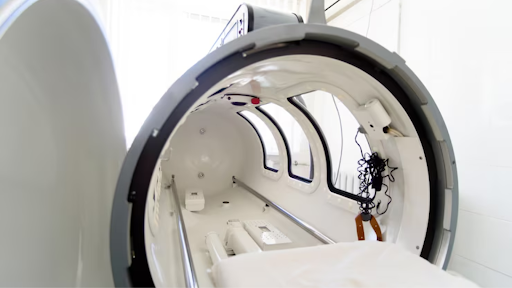When a pet is sick or injured, it’s natural to look for treatments that help them get better quickly. But sometimes, regular medicine and care don’t work fast enough or fully fix the problem.
So, what options do you have when healing is slow or the injury seems severe? Could increasing oxygen supply to your pet’s tissues speed things up?
That’s where veterinary hyperbaric oxygen therapy comes in. This treatment uses pure oxygen in a pressurized chamber to support healing in animals. What types of conditions benefit from this therapy? And how does it work to help pets recover?
Let’s explore some of the common health issues in pets where hyperbaric oxygen therapy can be a real game changer.
Why Extra Oxygen Can Help
Oxygen is critical for cells to repair and fight infection. When pets have injuries, infections, or other problems, their tissues sometimes don’t get enough oxygen. This slows recovery and makes it harder to fight germs. Veterinary hyperbaric oxygen therapy improves oxygen levels by having animals breathe pure oxygen inside a pressurized chamber. This helps their blood carry more oxygen to damaged areas, speeding up healing and strengthening their immune system.
1. Wounds That Won’t Heal
Pets with wounds that keep getting worse or don’t heal after regular treatment may benefit from oxygen therapy. Extra oxygen helps skin and tissues grow back faster and lowers infection risks.
2. Bone Infections
When an infection reaches a bone, it’s hard to treat because blood flow is limited there. Increased oxygen supply through this therapy helps antibiotics work better and supports bone healing.
3. Burns and Skin Damage
Burns and severe skin injuries reduce blood flow and oxygen supply to tissues. Hyperbaric oxygen treatment for dogs and other animals reduces swelling and helps skin repair.
4. Post-Surgery Recovery
After surgery, pets often have inflammation and slow healing. Using oxygen therapy can reduce swelling and pain, helping tissues recover faster.
5. Spinal and Nerve Injuries
Nerves and spinal cords need good oxygen to heal. Injuries can cut off this supply. This treatment helps restore oxygen to these areas, protecting cells and encouraging repair.
6. Severe Anemia or Blood Loss
If a pet has lost a lot of blood or has anemia, tissues may not get enough oxygen. Supporting recovery with extra oxygen can protect vital organs until normal blood levels return.
7. Carbon Monoxide Poisoning
Carbon monoxide binds to red blood cells, preventing oxygen delivery. Hyperbaric oxygen treatment for dogs and other pets speeds the removal of this toxin and restores oxygen flow to organs.
What Happens During the Treatment?
Pets are placed in a special chamber and breathe 100% oxygen while the pressure is increased above normal air pressure. This higher pressure allows more oxygen to dissolve in their blood. Each session usually lasts 30 to 90 minutes. The process is painless, and pets typically tolerate it well.
Important Things to Know
- The therapy is safe and non-invasive when done by trained vets.
- Side effects are rare but may include mild ear discomfort.
- The number of sessions depends on the condition and the pet’s response.
- It’s often combined with other treatments for best results.
How to Decide if Your Pet Needs This Therapy
If your pet has slow-healing wounds, serious infections, or nerve injuries, talk to your vet about veterinary hyperbaric oxygen therapy. They can help you decide if this treatment fits your pet’s needs and suggest a suitable plan.
Final Thoughts
Oxygen is essential for healing, and veterinary hyperbaric oxygen therapy is a useful way to boost oxygen delivery in pets with tough medical issues. Whether dealing with infections, injuries, or poisoning, this treatment supports faster recovery and better outcomes.
It’s not the answer for every problem but serves as a powerful tool in modern veterinary care. Early care and the right treatment choice can make a big difference in your pet’s health, so consider this therapy if your furry friend struggles with difficult conditions.
For more information visit : penwhatmatters.com








